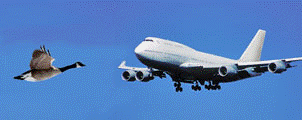Bird Strike Committee Proceedings
Date of this Version
2009
Abstract
The heroic ditching in the Hudsn River of US Airay’s Flight 1549 following multiple bird strikes with Canada geese has increased public awareness of bird aircraft strike hazards (BASH); and has focused attention on new tools such as avian radar to help further improve aviation safety. Reports in the media have suggested that had avian radars been deployed at LaGuardia, this bird strike could have been avoided. Indeed, there is mounting evidence supporting existing avian radar’s ability to provide wildlife control and air operations personnel with greatly improved bird situational awareness which can be used to reduce bird hazards around airports for improved safety. But can avian radar provide pilots with the ability to sense and avoid specific bird hazards? The question requires careful consideration and is the subject of this paper. Using the Hudson incident as a case study, this paper examines the coverage and location accuracy needed if bird warnings to pilots are to be acted upon, followed by a look at the ability of today’s avian radars to provide these.


Comments
11th Joint meeting of Bird Strike Committee USA & Canada, Victoria BC, Canada 14-17 September 2009